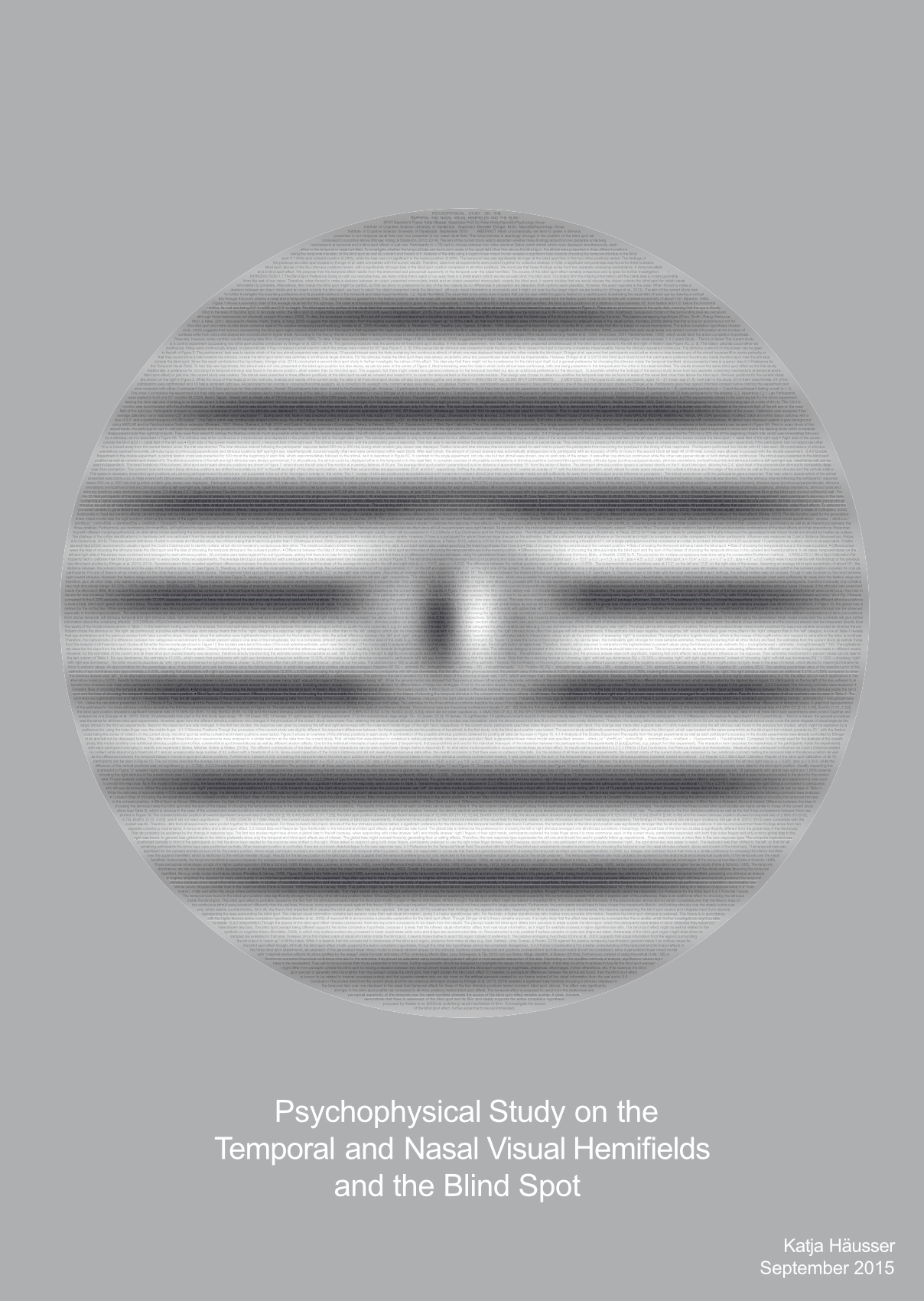Psychophysical Study on the Temporal and Nasal Visual Hemifields and the Blind Spot
for Katja Häusser
Katja Häusser’s research explores how much we rely on brain-generated visual percepts compared to actual seen ones, revealing that we trust the brain-generated ones more. For the corresponding Thesis Art piece, Benedikt Ehinger recreated the central visual stimulus (a so-called Gabor patch) using the text of her thesis.
The Creation Process
Benedikt’s approach was entirely digital, using Adobe Illustrator as his tool of choice. While working with large amounts of text presented some challenges, especially with Illustrator’s slower performance, in this early work, he did not use individual glyphs, but text-blocks, greatly improving the performance. The recreated stimulus, as used in Häusser’s experiment, is a convolution of a sinusoidal wave with a Gaussian, and led to key insights into the human brain.
Artistic Concept
The artwork plays with the concept of spatial frequency illusions, where objects are perceived differently from different distances. This idea is directly tied to Häusser’s findings, where brain-generated visual cues influence our perception. The Thesis Art text aspect becomes only clear, as the viewer moves closer to it, symbolizing the experiment’s results: our perception shifts based on proximity and the way our brain interprets visual stimuli.
“My very first student and my first Thesis Art piece.
Benedikt Ehinger
I’m quite happy that we made a real discovery in this project – something entirely new and before unknown.”
Personal Reflection
Reflecting on this first student project, Benedikt fondly recalls the experience: “We even published a paper from this work, and I’m most proud of that,” he says. The translation of the research into visual art was a unique challenge. He notes, “It was the most literal translation I made, using text as the ‘paint’ rather than shaping it into forms.”
